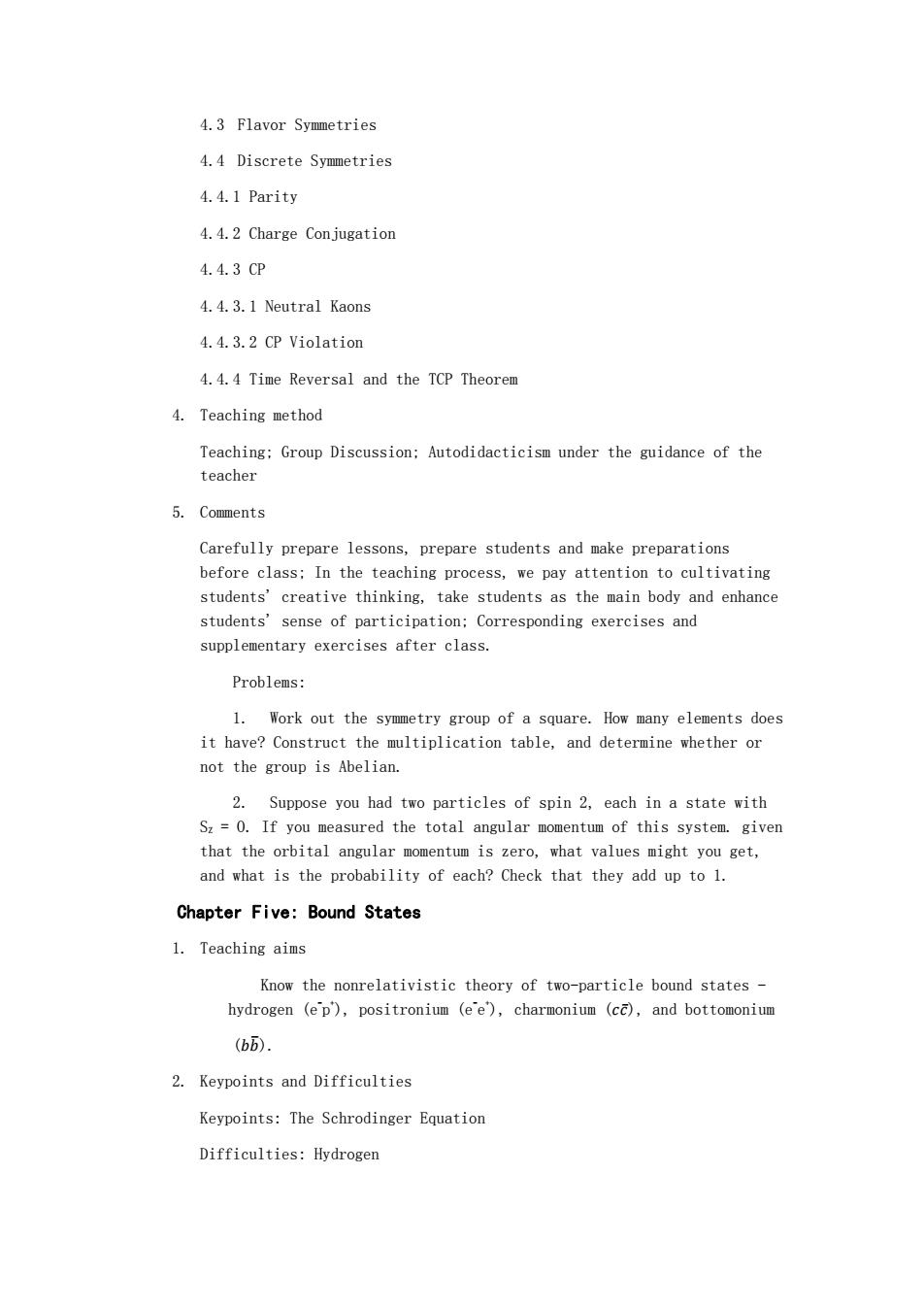正在加载图片...

4.3 Flavor Symmetries 4.4 Discrete Symmetries 4.4.1 Parity 4.4.2 Charge Conjugation 4.4.3CP 4.4.3.1 Neutral Kaons 4.4.3.2 CP Violation 4.4.4 Time Reversal and the TCP Theorem 4.Teaching method Teaching:Group Discussion:Autodidacticism under the guidance of the teacher 5.Comments Carefully prepare lessons,prepare students and make preparations students'creative thinking,take students as the main body and enhance students'sense of participation:Corresponding exercises and supplementary exercises after class. Problems 1.Work out the symmetry group of a square.How many elements does it have?Construct the multiplication table,and determine whether or not the group is Abelian. 2.Suppose you had two particles of spin 2,each in a state with S2=0.1f you easured the total angular ent of this system given that the orbital angular momentum is zero,what values might you get, and what is the probability of each?Check that they add up to 1. Chapter Five:Bound States 1.Teaching aims Know the nonrelativistic theory of two-particle bound states- hydrogen (ep),positronium (e'e),charmonium (cc),and bottomonium (b5. 2.Keypoints and Difficulties Keypoints:The Schrodinger Equation Difficulties:Hydrogen4.3 Flavor Symmetries 4.4 Discrete Symmetries 4.4.1 Parity 4.4.2 Charge Conjugation 4.4.3 CP 4.4.3.1 Neutral Kaons 4.4.3.2 CP Violation 4.4.4 Time Reversal and the TCP Theorem 4. Teaching method Teaching; Group Discussion; Autodidacticism under the guidance of the teacher 5. Comments Carefully prepare lessons, prepare students and make preparations before class; In the teaching process, we pay attention to cultivating students' creative thinking, take students as the main body and enhance students' sense of participation; Corresponding exercises and supplementary exercises after class. Problems: 1. Work out the symmetry group of a square. How many elements does it have? Construct the multiplication table, and determine whether or not the group is Abelian. 2. Suppose you had two particles of spin 2, each in a state with SZ = O. If you measured the total angular momentum of this system. given that the orbital angular momentum is zero, what values might you get, and what is the probability of each? Check that they add up to 1. Chapter Five: Bound States 1. Teaching aims Know the nonrelativistic theory of two-particle bound states - hydrogen (ep + ), positronium (ee + ), charmonium (ܿܿ̅), and bottomonium (ܾܾത). 2. Keypoints and Difficulties Keypoints: The Schrodinger Equation Difficulties: Hydrogen